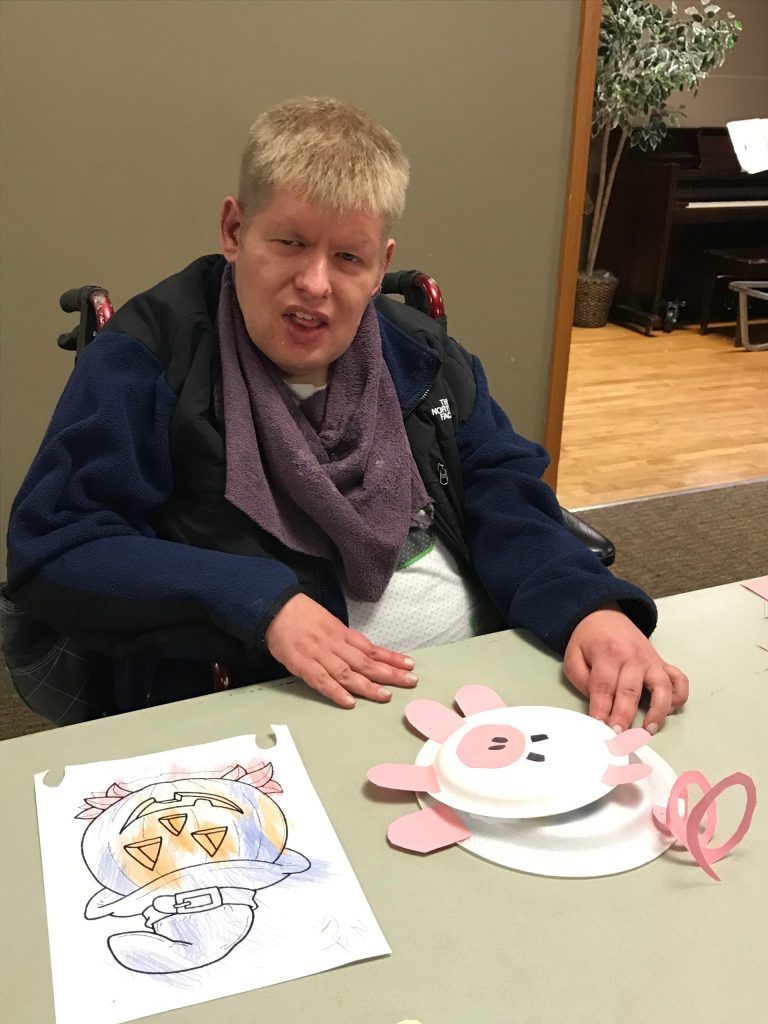It is fun to watch Nick working on Art projects. Some of them are more difficult than he can accomplish without assistance. With other projects he is completely independent, but regardless of the amount of help he needs, when the project is finished, he feels empowered. “I did it. I do Arts and Crafts.” You can see the joy on his face.
This past week we were at a restaurant that hands out crayons and a worksheet for kids to work on while waiting for the food. It is a brilliant idea, and Nick always wants to participate. Sometimes, I would like to participate in the coloring worksheet too, especially when it seems to be taking forever for the food to come.
The lesson for me has been that Nick’s projects are not “perfect.” He colors outside the lines, the colors are not always what matches the color of the item in real life. When we were children, we knew our projects were wonderful. We were all blossoming young artists. If you doubt this, look at what happens when a pre-school age child is showing an art project to their parents. They are so proud of what they created.
Then for many of us, somewhere along our artist path, self-judgement enters in and wrecks havoc. Instead of feeling the natural joy that happens in the creative process, we begin to worry that the project won’t be accepted by others. We think that it is not good enough. And then the joy is diminished. When the joy is diminished we begin to avoid participating in the creative process. We might even begin to believe that we are not creative.
This was me. Even though things I was doing were extremely creative, I had convinced myself a lie. I told myself and others that I wasn’t creative. I avoided social situations and events that would put me in a position to try and be creative. It was very stressful for me.
I have many grandchildren. I have the intention to foster their creativity and we have supplies in our house to help them play. I was encouraging and supporting them, but not participating. This was working very well for me for about 10 years. Then one afternoon, my granddaughter age 5 was using the watercolors to paint. I was sitting with her talking to her. It was very fun and comfortable for me.
Suddenly she put her paint brush down and looked into my eyes and said, “Granny, I don’t want to paint anymore unless you paint with me.” I stopped breathing. I didn’t feel the same pressure I had felt from others over the years. She wasn’t trying to guilt me or judge me, she was feeling joy in her creative process and wanted to experience that together. I knew she loved me, I was safe.
“Ok.” I said. She handed me a piece of paper and paint brush. It was wonderful and fun. I broke through my block. My painting will never hang in a museum, but it is hanging on the wall in my home. It marks a watershed moment for me. I embraced my creativity that had laid dormant for many decades. The joy has cascaded into many other aspects of my life.
Think about what would happen if you moved through a creative block you have. I can tell you it is wonderful.
Please share this blog if it resonates with you or you know someone who might benefit from it. If you want to get a copy of the book as soon as it is available, click here to sign up.


